Emma 25 Foam
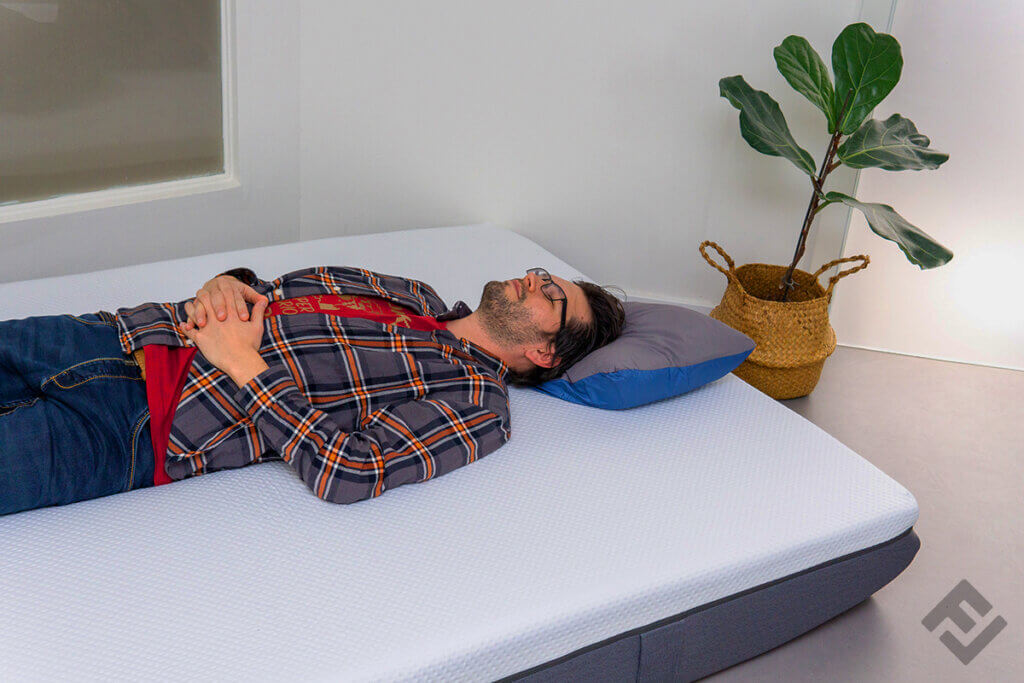
Pros
- Comfort height of 25 centimetres
- Ergonomic zones allow for optimal support
- Adapts well to the body, especially in lateral position
- 200-night trial
- 10-year guarantee on the mattress core
Cons
- Too soft for some
- Gives way strongly in the pelvic area when lying on the back
Rating
8.33 / 10
FinalCheck verdict
The Emma 25 Foam provides a soft and comfortable feeling. Our testers felt especially comfortable in a lateral position. Thanks to the manufacturer’s own Airgocell 2.0 foam layer, changes in position are no problem.
Packaging and first impression





Lying characteristics





Prices and conditions





The product presented here was provided to us free of charge by Amazon. The provider had no influence on the test criteria or our rating.
General information
Founded in Frankfurt, Germany in 2015, Emma has not only steadily expanded their range, but also quickly expanded to 20 countries across 4 continents and has been named UK’s most awarded sleep brand for every year since 2019. By now, the range includes bedding of all kinds, e.g. bed frames, slatted frames, and pillows.
After the supplier had already provided us with the Emma Two mattress (size 90 x 200cm) as well as the box spring bed, we received another product for testing. This was the Emma 25 Foam with the dimensions 140 x 200cm. The number 25 in the name refers to the height of the mattress, which is 7cm more than their competitors usually offer. This means that the mattress has a comfort height. The Emma 25 Foam mattress is one of Emma‘s premium mattresses, which on the one hand builds on the advantages of the Emma One and on the other hand includes new elements. These include a particularly soft cover.
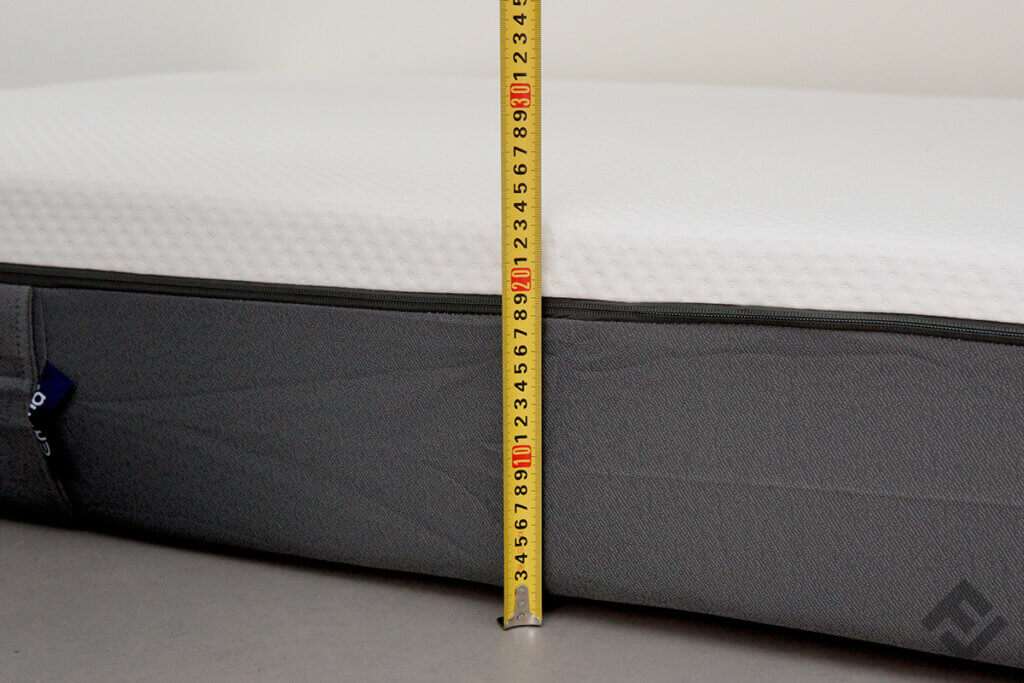
Like the Emma One, the Emma 25 Foam is made up of three foam layers. The top layer is about 4cm of the company’s own Airgocell 2.0, an open-pored and point-elastic material that is somewhat reminiscent of gel foam. Compared to its predecessor, the foam is characterised by higher breathability, according to the manufacturer. Furthermore, the low rolling resistance makes it easier to change positions at night.
The Airgocell 2.0 layer is followed by 4cm of Lineadapt Visco foam and 17cm of supportive Ergobase cold foam. The Visco foam is supposed to adapt to the body contours and distribute pressure evenly. In contrast to the Emma One, however, the cold foam of the Emma 25 Foam is zoned according to the body to provide ergonomic support for the spine. According to the manufacturer, these properties ensure a light, almost weightless feeling and promote a peaceful sleep.
Just like the Emma One, the Emma 25 Foam is also tested for harmful substances and are even approved for babies.
Packaging and first impression 




The mattress is delivered rolled up in a large, rectangular box. As it weighs around 25.9kg, it is somewhat heavy for a single person. So, it’s best to find a mate to help you.
The mattress comes in a vacuum pack that protects it during transport, as well as a second hygienic protective plastic cover. There is no blade included to open the packaging. Instead, the there is a marked line where you can tear it open.
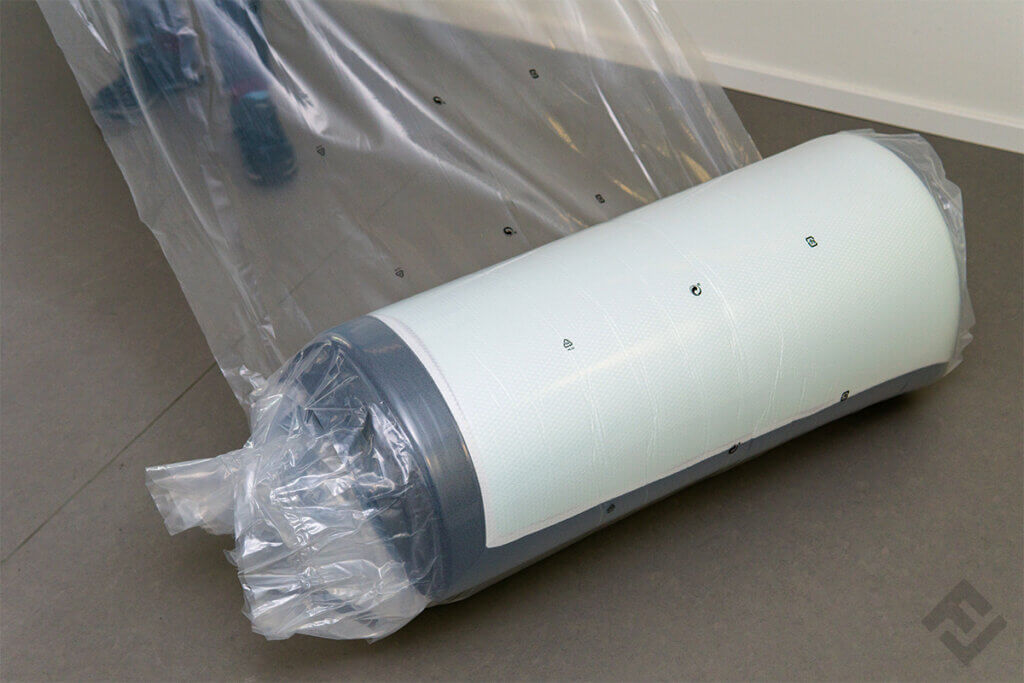
After unrolling, the mattress was ready for use within a few minutes. However, it took a little longer for it to reach its full height on the sides as well. The mattress had only a subtle odour, which was hardly noticeable. If you are sensitive to odours, you can air it out for a few hours at an open window.
To make the mattress easier to transport, there are two handles on each of the long sides. They are robust and neatly finished for the most part. Although the seams of the test product were not perfectly neat in one place. This small production-related defect didn’t affect the stability of the handle. We were able to carry the Emma 25 Foam through the content office several times without the handles loosening.
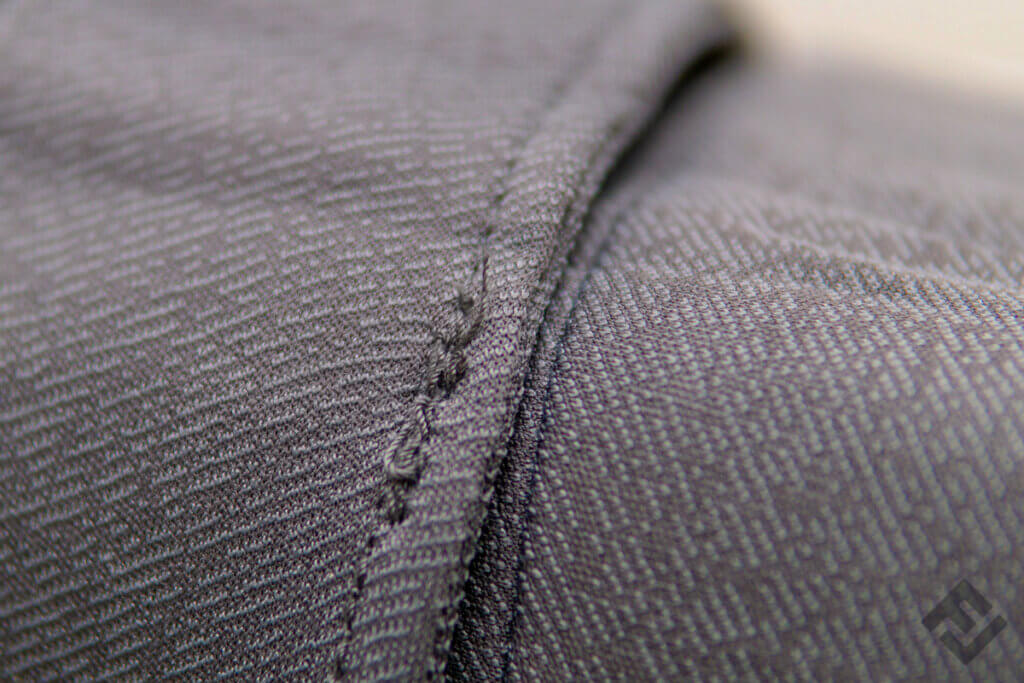
The cover feels soft and of high quality. It is made entirely of polyester on the top and 85% of polypropylene on the bottom. The bottom side has a tactile structure due to the anti-slip coating. According to the manufacturer, this makes the mattress usable on box spring beds. In addition, the product is not intended for flipping. Thanks to the zip, the cover can be removed and washed in the washing machine at 40 °C. However, since dust mites only die at a temperature of 60 °C, the mattress is only of limited suitability for allergy sufferers. According to Emma, the mattress protector is equipped with allergy protection and allows for a complaint-free sleep. However, the zip snagged in some places when opening and closing.
Opening the zip reveals the three layers of foam. The first thing that catches the eye is the jagged top of the Ergobase foam layer, on which the Line-Adapt visco layer is placed. At both ends of the long side, the five round ventilation channels can be seen. Both the surface structure and the channels of the Ergobase layer ensure good ventilation of the mattress.
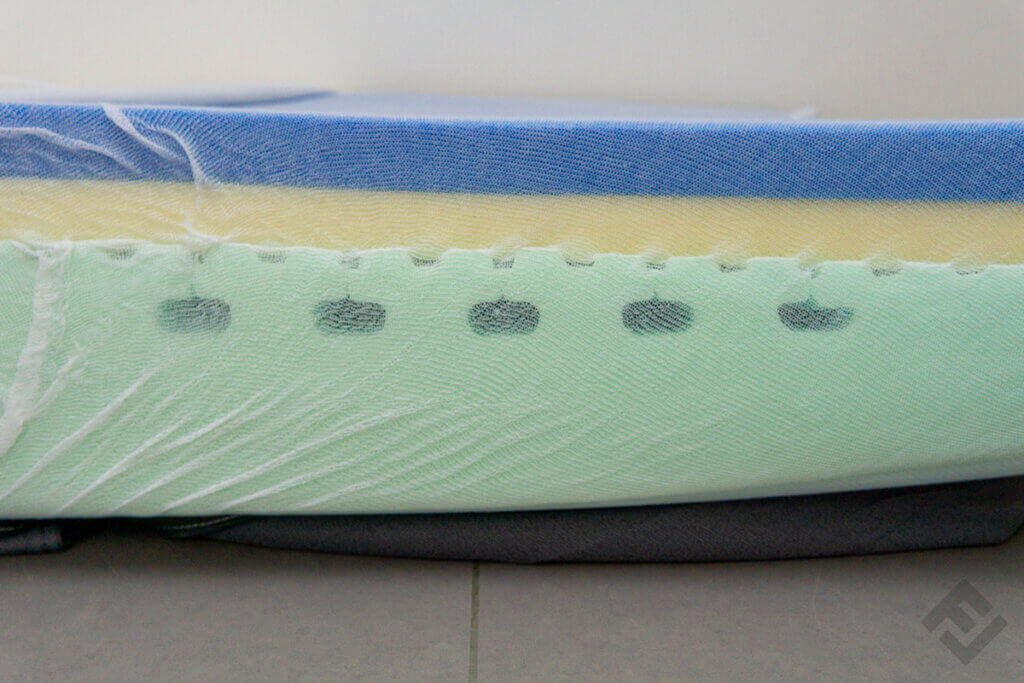
Lying characteristics 




To evaluate the comfort of the mattress, seven colleagues agreed to lie on the mattress for 20 minutes and describe their impressions in a short questionnaire. Emma advertises that the mattresses are suitable for everyone, regardless of body size and type or preferred lying position. The Emma 25 Foam is even said to guarantee ideal body adaptation thanks to the Lineadapt foam. For our test, this would mean that all testers sink into the right places and are optimally supported. But does the mattress really deliver what it promises?
Our test group consisted mostly of side and stomach sleepers or those who switch between the positions. Only one test person preferred lying on the back, another one sleeps only at times in this position. Some testers stated that they had switched to lying on their backs during the test, even though it is not their preferred position. Thus, we were able to collect impressions from all three most common lying positions.
The results are largely positive. Our editors were comfortable or even very comfortable lying on the mattress and mostly felt well supported. Two testers were of a different opinion: one described very good support and one no support at all.
Interestingly, several testers reported that the mattress provided worse support when lying on their back than in the side or stomach position. The lower body centre or the pelvic area sank too much into the mattress. Others, however, found the supine position comfortable. The results indicate that the supine position is not suitable for every body type. However, we were not able to check which physical characteristics determine the support in the supine position.

In the side position, the body sank in at exactly the right places throughout. Those who had been lying on their stomach felt very comfortable on the mattress. For side and stomach sleepers, the mattress does a good job, at least for the short time we tested it.
The mattress’s firmness was another point of discussion. When we first sat or laid down on the Emma 25 Foam, it seemed very soft. Curious colleagues who only briefly went to the mattress also largely confirmed this impression. When we actually tried it out, we noticed that the mattress seemed harder in the side position than in the back position.
Depending on their subjective perception, our colleagues described the firmness either as soft to medium or between medium and hard — more often the former.
Prices and conditions 




The Emma 25 Foam is available in eleven different sizes. These include a particularly small model with 80 x 200cm, an extra-long 90 x 220cm mattress, and an oversized version with 200 x 200cm. The Emma 25 Foam costs between £331 and £655 on Amazon. The size we tested is available for between £370 and £390, depending on the offer.
Emma gives a 10-year manufacturer warranty for the mattress core. In addition, you have the option to test the Emma 25 Foam for 200 nights. Anyone who finds that the product doesn’t provide restful sleep can return it free of charge and receive a full refund of the purchase price.
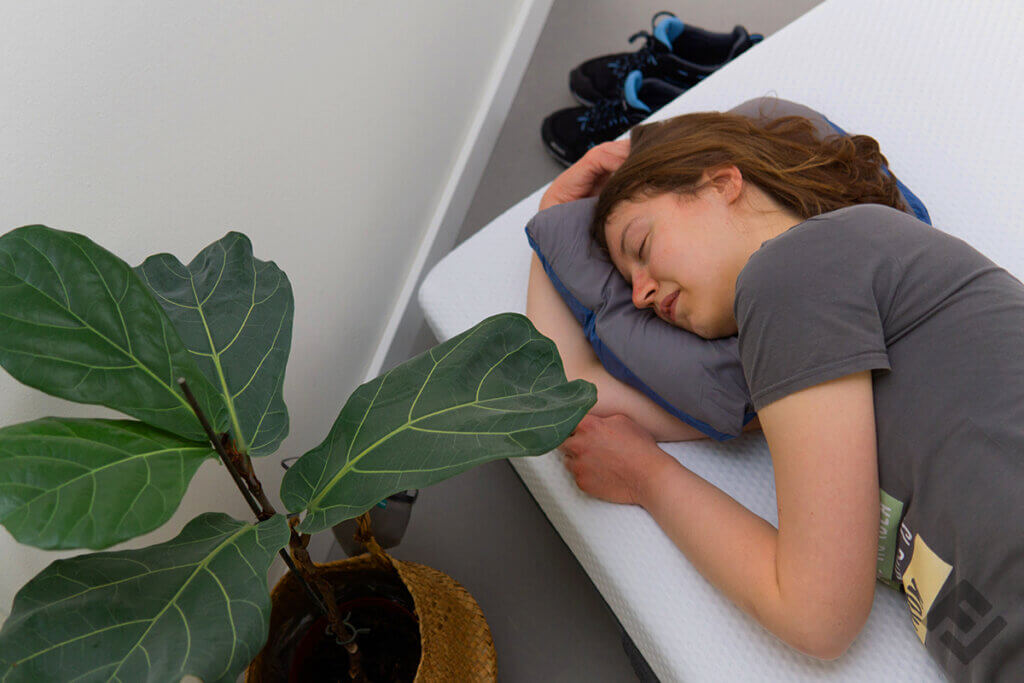
Summary
The Emma 25 Foam is a rather soft mattress that adapts well to the contours of the body. It scored particularly well in the side position with its excellent support. Those who prefer to sleep in the supine position are sometimes bothered by the fact that the pelvic area sinks in too much. For those who prefer to sleep on a harder mattress, this model is less suitable.
The mattress itself and its cover seem well-made and robust. Even the handles with its somewhat unsightly seam survived repeated transport without any problems.
With a price between £370 and £390, depending on the current offer, it is advisable to take advantage of the 200-day trial period. During this period, you can weigh up whether the Emma 25 Foam is right for you.
Featured Image: © FinalCheck | Images 1-6: © FinalCheck
